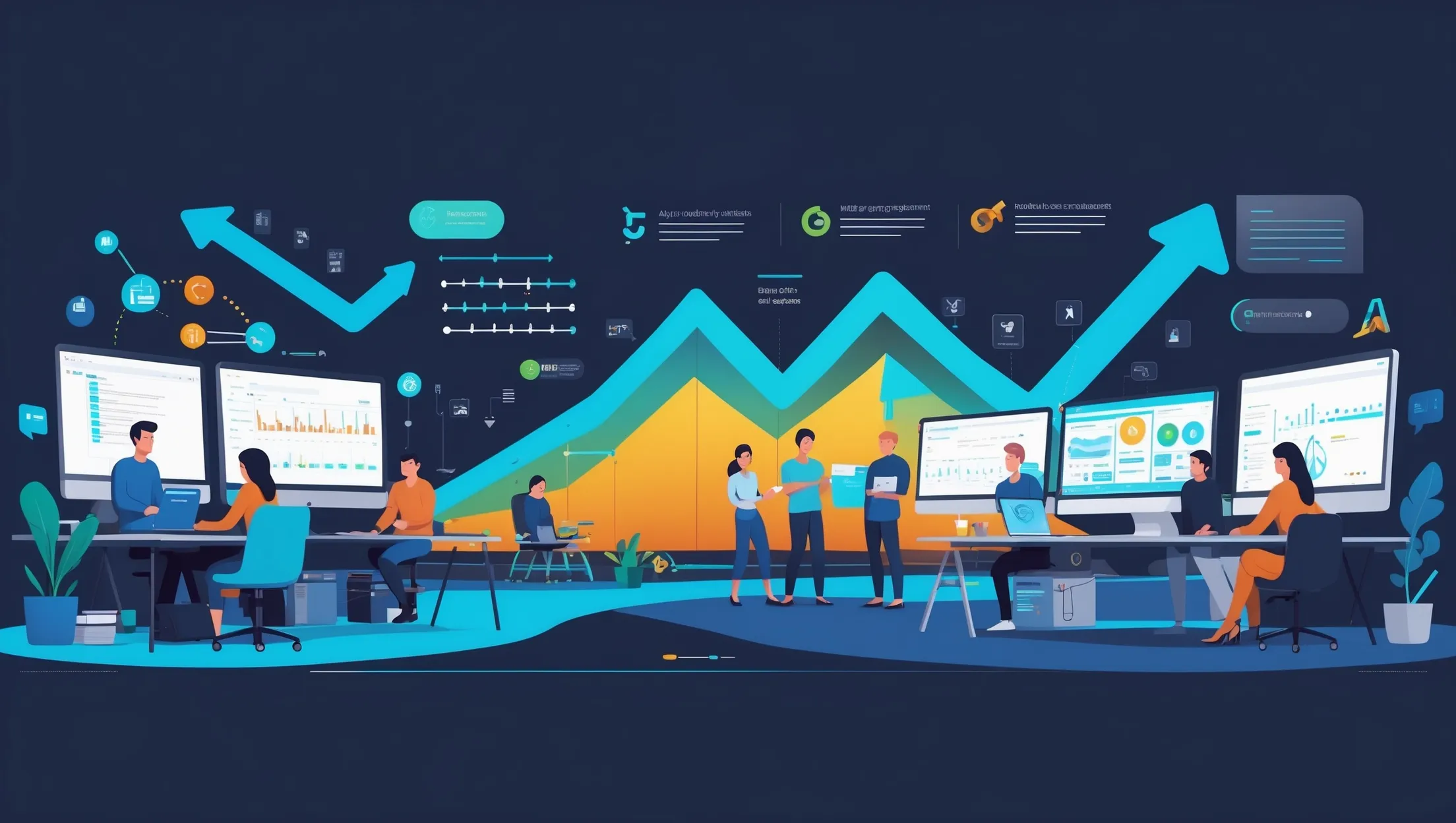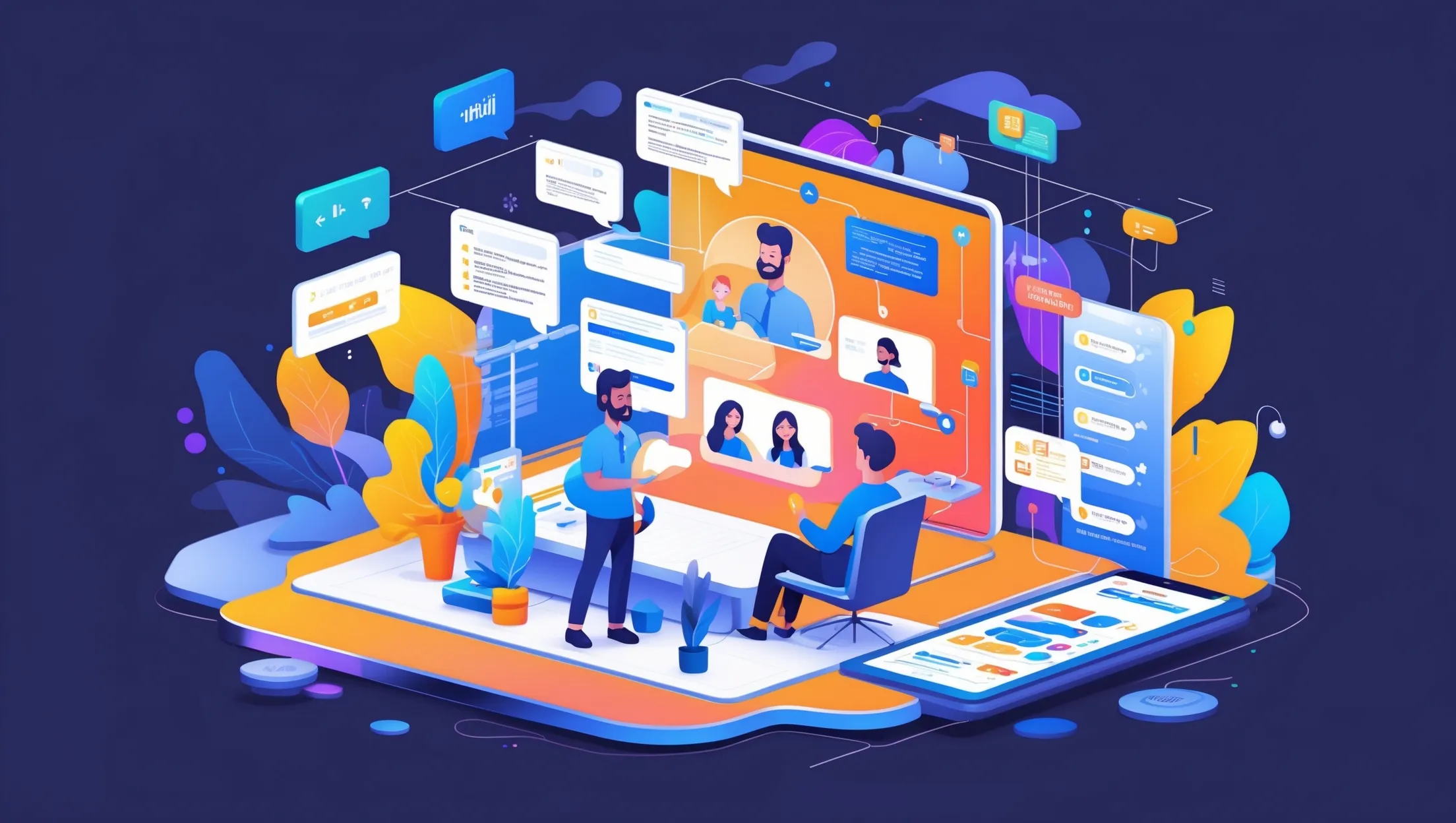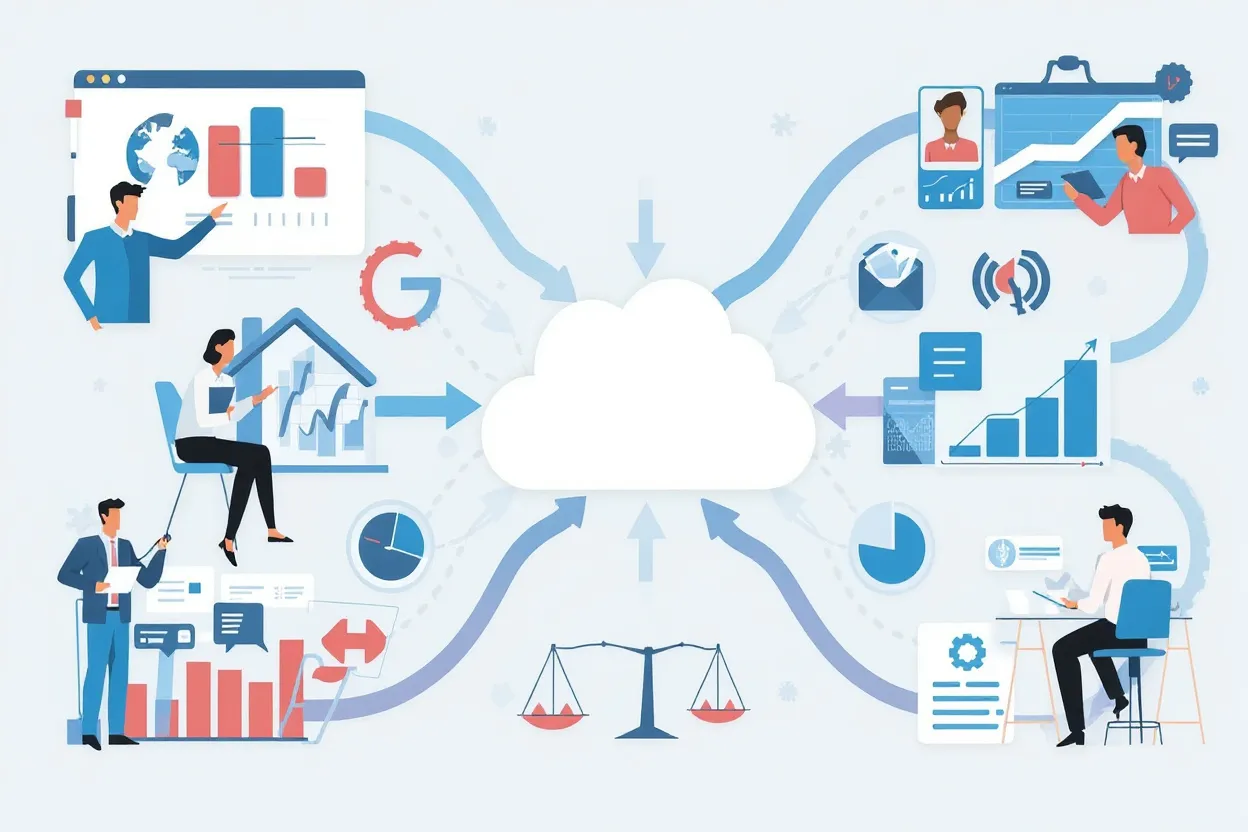
Scaling from 1 to 10 engineers: the growth stages nobody talks about
Navigate the hidden challenges of scaling your engineering team from 1 to 10 people. Learn the critical transitions, cultural shifts, and system changes that determine whether your team thrives or fragments during rapid growth, with practical frameworks from successful CTOs.
Scaling from 1 to 10 engineers is where most startups break their engineering culture. At 1 engineer, everything is simple. Everyone knows everything, communication is instant, and decisions happen fast. At 10 engineers, you need processes, documentation, and intentional culture building.
The companies that ignore this transition end up with fragmented teams, duplicated work, and engineer exodus. I’ve helped dozens of startups navigate this scaling challenge. The successful ones understand that scaling engineering teams isn’t just about hiring - it’s about evolving your entire approach to building software.
The hidden complexity of team scaling
Most founders think scaling engineering teams is a hiring problem. Hire good people, give them interesting work, and they’ll figure it out. This works until it doesn’t.
The reality is that each doubling of team size introduces exponential coordination challenges. The number of potential communication paths grows from 1 (between 2 people) to 45 (between 10 people). Without intentional structure, teams fragment into silos, duplicate effort, and lose the speed that made them successful.
Case study: The coordination crisis
A Series A startup I worked with grew from 2 to 8 engineers in four months. On paper, this should have quadrupled their development capacity. Instead, their feature delivery slowed by 50%.
The problems were everywhere:
- Three engineers independently built similar API endpoints
- Code reviews took days because nobody owned the process
- New features broke existing functionality because no one knew all the system dependencies
- Engineers started working in isolation to avoid coordination overhead
The founders were frustrated. They’d hired great people and given them autonomy, but productivity was declining as they grew. The issue wasn’t the engineers - it was the lack of systems to coordinate their work effectively.
The three critical scaling stages
Based on working with hundreds of engineering teams, I’ve identified three distinct stages in the 1-10 engineer journey. Each stage requires different approaches to leadership, communication, and technical systems.
Stage 1: The dynamic duo (1-2 engineers)
Characteristics:
- Direct collaboration on all decisions
- Minimal process overhead
- High context sharing
- Rapid iteration and pivoting
What works:
- Verbal communication for most coordination
- Shared ownership of all code and systems
- Flexible roles and responsibilities
- Quick informal code reviews
Common challenges:
- No documentation or knowledge transfer
- Hero engineering culture
- Difficulty onboarding additional team members
- Single points of failure in knowledge and systems
Key transition indicators:
- Taking too long to onboard new engineers
- Critical knowledge concentrated in one person
- Difficulty maintaining quality with faster iteration
- Need for parallel development on different features
At this stage, the main job is proving product-market fit while building systems that can evolve. Don’t over-process, but start documenting core decisions and establishing basic development workflows.
Stage 2: The growth squad (3-5 engineers)
Characteristics:
- Need for basic coordination structures
- First team leadership roles emerge
- Increased complexity in code collaboration
- Balance between speed and sustainability
What works:
- Daily standups and weekly planning
- Code review processes and standards
- Basic project management and task tracking
- First documentation and onboarding processes
Common challenges:
- Resistance to new processes and structure
- Uneven skill levels and contribution patterns
- First conflicts over technical direction
- Communication breakdowns between team members
Key transition indicators:
- Features taking longer due to coordination overhead
- Code conflicts and integration challenges
- Engineers stepping on each other’s work
- Need for specialized knowledge in different areas
This is where many teams make their first major mistakes. They either add too much process too fast (killing agility) or avoid structure too long (creating chaos). The key is adding just enough structure to coordinate effectively while preserving the speed and creativity that got you here.
Coaching for Tech Leads & CTOs
Ongoing 1:1 coaching for startup leaders who want accountability, proven frameworks, and a partner to help them succeed under pressure.
Stage 3: The coordinated team (6-10 engineers)
Characteristics:
- Multiple areas of specialization
- Formal processes for coordination and quality
- Clear roles and responsibilities
- Systematic knowledge sharing
What works:
- Cross-functional teams with clear ownership
- Regular retrospectives and process improvement
- Comprehensive documentation and knowledge management
- Formal hiring and onboarding processes
Common challenges:
- Process overhead reducing development velocity
- Communication gaps between different teams or areas
- Maintaining startup culture while adding structure
- Balancing individual autonomy with team coordination
Key transition indicators:
- Need for multiple independent work streams
- Coordination overhead exceeding development time
- Knowledge gaps preventing effective collaboration
- Difficulty making decisions that affect multiple people
This stage requires the biggest mindset shift for founders. You’re no longer running a small team where you can coordinate everything personally. You need systems, processes, and delegation to scale effectively.
The technical evolution framework
As your team grows, your technical practices must evolve to support coordination and quality at scale:
Development workflow evolution
Stage 1 (1-2 engineers):
Simple workflow:
1. Quick discussion of approach
2. Build feature directly on main branch
3. Informal review before deployment
4. Deploy and monitorStage 2 (3-5 engineers):
Structured workflow:
1. Feature planning and task creation
2. Feature branch development
3. Code review process
4. Testing and staging deployment
5. Production deployment with monitoringStage 3 (6-10 engineers):
Systematic workflow:
1. Requirements gathering and technical design
2. Task breakdown and assignment
3. Parallel development on feature branches
4. Comprehensive code review and testing
5. Staged deployment with automated checks
6. Post-deployment monitoring and retrospectiveCode quality standards
Stage 1: Informal quality
- Verbal agreement on coding standards
- Basic manual testing
- Simple error handling
- Minimal documentation
Stage 2: Structured quality
- Written coding standards and guidelines
- Basic automated testing suite
- Code review checklist
- Core system documentation
Stage 3: Systematic quality
- Comprehensive testing coverage requirements
- Automated code quality checks
- Performance and security testing
- Complete system and API documentation
Architecture and system design
Stage 1: Monolithic simplicity
- Single application with minimal modules
- Shared database and simple data models
- Basic error handling and logging
- Manual deployment processes
Stage 2: Organized monolith
- Clear module separation and interfaces
- Database organization with proper indexing
- Structured logging and error tracking
- Automated deployment pipeline
Stage 3: Modular architecture
- Service-oriented or microservice architecture consideration
- Database optimization and scaling strategies
- Comprehensive monitoring and alerting
- Infrastructure as code and automated scaling
Got a leadership question?
Share your toughest challenge and I might feature it in an upcoming episode. It's free, anonymous, and you'll get extra resources in return.
Communication and culture scaling
The biggest challenge in scaling engineering teams isn’t technical - it’s maintaining effective communication and culture as the team grows.
Communication evolution
Stage 1: High-context, informal
- Most communication happens verbally
- Shared understanding of all business context
- Quick decision-making with minimal documentation
- High trust and informal conflict resolution
Stage 2: Structured but flexible
- Mix of verbal and written communication
- Regular team meetings and planning sessions
- Basic documentation of decisions and processes
- Emerging need for conflict resolution processes
Stage 3: Systematic and documented
- Primarily written communication for important decisions
- Regular all-hands and cross-team coordination meetings
- Comprehensive documentation and knowledge management
- Formal processes for decision-making and conflict resolution
Culture preservation strategies
Maintain startup values:
- Document and communicate core engineering values
- Hire people who align with your culture and technical philosophy
- Create opportunities for informal interaction and relationship building
- Resist bureaucracy while adding necessary structure
Foster collaboration:
- Encourage cross-team knowledge sharing and collaboration
- Create mechanisms for engineers to work on different parts of the system
- Maintain shared ownership while establishing clear responsibilities
- Celebrate team successes and shared learning
Enable growth:
- Provide mentorship opportunities between senior and junior engineers
- Create career progression paths that don’t require management
- Invest in learning and development opportunities
- Recognize individual contributions while emphasizing team success
Hiring and onboarding evolution
Your approach to hiring and onboarding must evolve dramatically as you scale:
Hiring strategy by stage
Stage 1: Generalist hiring
- Look for engineers who can work across the full stack
- Prioritize adaptability and learning ability over specific experience
- Cultural fit and shared vision are most important
- Technical skills can be developed on the job
Stage 2: Balanced hiring
- Mix of generalists and specialists based on immediate needs
- Start requiring specific experience in your technology stack
- Balance senior experience with junior talent for growth
- Add basic technical assessment and team fit evaluation
Stage 3: Strategic hiring
- Hire for specific roles and areas of expertise
- Require proven experience in similar scaling challenges
- Add comprehensive technical and cultural assessment
- Consider team composition and skill gap analysis
Onboarding process evolution
Stage 1: Personal onboarding
- Founders directly onboard new engineers
- Informal introduction to codebase and business context
- Immediate pairing with existing team members
- Learn by doing with close mentorship
Stage 2: Structured onboarding
- Designated onboarding buddy system
- Written onboarding checklist and timeline
- Combination of documentation and hands-on learning
- First project designed for learning and contribution
Stage 3: Systematic onboarding
- Comprehensive onboarding program with clear milestones
- Mixed learning approaches including documentation, training, and mentorship
- Multi-week program covering technical, business, and cultural aspects
- Regular check-ins and feedback during first 90 days
Decision-making and ownership evolution
As teams grow, decision-making becomes more complex and requires more structure:
Decision-making frameworks
Stage 1: Founder-driven decisions
- Technical decisions made by founders or lead engineer
- Quick consensus-building through informal discussion
- High trust and shared context enable fast decisions
- Little need for formal documentation or approval processes
Stage 2: Collaborative decisions
- Team input on major technical decisions
- Basic decision documentation and communication
- Clear escalation path for difficult decisions
- Balance between speed and inclusivity
Stage 3: Systematic decisions
- Clear decision-making authority and processes
- Technical design review and approval processes
- Comprehensive documentation and communication of decisions
- Regular review and adjustment of decision-making processes
Ownership and responsibility models
Stage 1: Shared ownership
- Everyone owns everything
- Informal coordination and responsibility assignment
- High context and shared understanding
- Flexibility to work on any part of the system
Stage 2: Emerging specialization
- Natural specialization based on interest and expertise
- Basic area ownership with collaborative boundaries
- Clear primary and secondary ownership for major systems
- Flexibility to contribute across different areas
Stage 3: Clear ownership
- Defined ownership and responsibility areas
- Cross-team collaboration processes and interfaces
- Clear escalation and decision-making authority
- Balance between ownership and system-wide knowledge
Managing the transition challenges
Each scaling stage brings specific challenges that can derail team effectiveness:
Common stage 1-2 transition challenges
The process resistance: Engineers who joined for startup agility resist new structure. Address this by:
- Explaining the “why” behind each new process
- Starting with minimal viable process and evolving
- Getting team input on process design
- Demonstrating how process enables rather than constrains
The knowledge concentration: Critical knowledge remains concentrated in early employees. Solve this by:
- Systematic documentation of core systems and decisions
- Cross-training and knowledge sharing sessions
- Pairing new engineers with experienced team members
- Creating redundancy in critical system knowledge
Common stage 2-3 transition challenges
The coordination overhead: Time spent coordinating starts exceeding time spent building. Address this by:
- Clear ownership and responsibility boundaries
- Asynchronous communication and decision-making processes
- Regular process review and optimization
- Investment in tools and automation that reduce coordination overhead
The culture dilution: Startup culture gets lost as structure increases. Prevent this by:
- Intentional culture preservation and communication
- Hiring practices that prioritize cultural fit
- Regular team building and informal interaction opportunities
- Leadership modeling of desired cultural behaviors
Facing a leadership challenge right now?
Don't wait for the next fire to burn you out. In a 30-minute discovery call we'll map your blockers and outline next steps you can use immediately with your team.
Tools and systems for scaling
The right tools can significantly ease the transition challenges:
Essential tools by stage
Stage 1 tools:
- Basic code repository (GitHub, GitLab)
- Simple project tracking (Linear, Notion, or Trello)
- Communication platform (Slack, Discord)
- Basic deployment pipeline
Stage 2 tools:
- Code review tools and automated checks
- More sophisticated project management (Jira, Monday)
- Documentation platform (Confluence, Notion)
- Error tracking and basic monitoring (Sentry, DataDog)
Stage 3 tools:
- Comprehensive development workflow tools
- Advanced project management and resource planning
- Knowledge management and documentation systems
- Full observability and monitoring stack
Process automation priorities
Automate first:
- Code quality checks and testing
- Deployment and release processes
- Basic monitoring and alerting
- Onboarding workflow and documentation
Automate later:
- Advanced performance monitoring
- Complex integration testing
- Resource planning and allocation
- Advanced analytics and reporting
Success metrics and monitoring
Track your scaling effectiveness with both quantitative and qualitative metrics:
Team effectiveness metrics
Productivity indicators:
- Feature delivery velocity and consistency
- Code review turnaround time
- Deployment frequency and success rate
- Bug discovery and resolution time
Team health indicators:
- Engineer satisfaction and engagement scores
- Knowledge sharing and collaboration frequency
- Team retention and voluntary turnover
- Cross-training and skill development progress
Process effectiveness metrics
Communication effectiveness:
- Meeting efficiency and decision-making speed
- Documentation usage and quality
- Cross-team collaboration frequency
- Conflict resolution time and effectiveness
System health indicators:
- Code quality and technical debt trends
- System reliability and performance
- Security and compliance posture
- Infrastructure cost and efficiency
Preparing for the next scaling challenge
Successfully scaling from 1 to 10 engineers sets you up for the next challenge: scaling from 10 to 25+ engineers. Start preparing early:
Foundation building
Scalable architecture:
- Design systems that can handle 10x growth
- Invest in monitoring and observability early
- Plan for service separation and team autonomy
- Build configuration and feature flag systems
Scalable processes:
- Document and systematize effective processes
- Create training and development programs
- Build knowledge management and sharing systems
- Establish clear career progression and growth paths
Scalable culture:
- Define and document engineering culture and values
- Create systems for culture preservation and evolution
- Build diverse and inclusive hiring and growth practices
- Establish leadership development and succession planning
Remember, scaling engineering teams is about more than just hiring great people. It’s about evolving your systems, processes, and culture to support effective collaboration at each stage of growth. The companies that succeed understand that each doubling of team size requires intentional changes to how they work together.
Focus on building the foundations that will serve you at the next stage, while solving the immediate coordination and effectiveness challenges of your current stage. The investment in systems and culture today determines whether your next scaling challenge will be a growth opportunity or a crisis.
📈 Join 2,000+ Tech Leaders
Get my weekly leadership insights delivered every Tuesday. Team scaling tactics, hiring frameworks, and real wins from the trenches.
Related Articles

Build vs buy: the technical decisions that make or break startups
Master the art of build vs buy decisions that determine your startup's technical trajectory. Learn the decision framework that successful CTOs use to balance development resources, time to market, and long-term flexibility with real case studies and actionable guidelines.

Remote hiring for technical roles: avoiding the interview charade
Remote technical hiring is broken. Most companies copy in-person interview processes that don't work remotely, leading to poor hires and lost talent. Here's how to build remote hiring that actually identifies great engineers and creates positive candidate experiences.

Why your best engineer makes a terrible technical lead
Promoting your strongest individual contributor to technical lead often backfires spectacularly. Here's why technical excellence doesn't predict leadership success, and how to identify engineers who can actually lead teams effectively.
